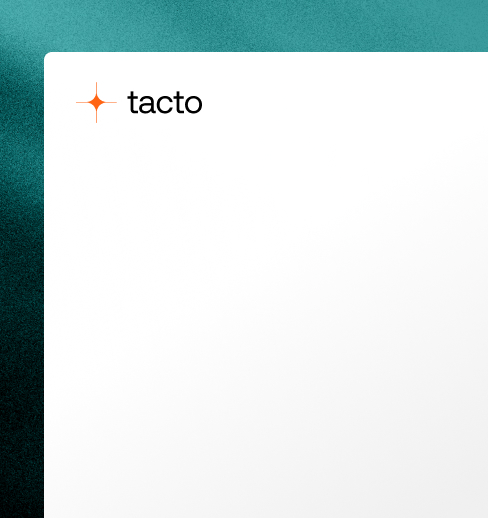Procurement Glossary
Purchasing optimization: Strategic approaches to optimizing procurement processes
In today's highly competitive business world, procurement optimization represents a decisive lever for reducing costs and increasing efficiency, enabling companies to sustainably improve their competitiveness and tap into growth potential. Through structured analysis methods, digital technologies and strategic approaches, modern Procurement can significantly increase its value contribution to the company and develop from a pure cost factor to a strategic partner.
What is purchasing optimization?
Purchasing optimization encompasses the entire optimization process of purchasing or procurement activities within a company, from supplier evaluation to the delivery of goods1. It aims to analyse and improve the efficiency and effectiveness of the purchasing process in order to save costs, optimize supplier performance and increase added value for the organization. Through systematic data analysis of purchasing patterns and supplier performance, opportunities for process improvement, cost reduction and better supplier relationships are identified and implemented.
Purchasing optimization: An introduction
Purchasing optimization is a strategic process that aims to make a company's procurement activities more efficient and cost-effective. In times of global markets and increasing competitive pressure, the systematic optimization of purchasing is becoming increasingly important. It encompasses various aspects such as process optimization, supplier management, demand planning and the digital transformation of procurement processes. Successful procurement optimization can not only lead to significant cost savings, but also improve the quality of the procured goods and services and increase security of supply. In this guide, you will learn the most important principles, methods and strategies for successfully optimizing your purchasing processes.
Core objectives of purchasing optimization:
- Cost reduction with the same or improved quality
- More efficient design of procurement processes
- Optimization of supplier management
- Improving the availability of goods
- Increasing transparency throughout the supply chain
Strategic importance of purchasing optimization
The strategic importance of purchasing has increased considerably in recent decades. What used to be considered a pure cost factor has developed into a strategically important area. In many sectors, materials purchasing accounts for a large proportion of total costs - in industry it is not uncommon for it to account for between 50-70% of total costs. This fact underlines the enormous leverage effect that effective purchasing optimization can have on company performance.
Comprehensive purchasing optimization contributes to improved efficiency and profitability of the company. Especially in times of volatile markets and uncertain supply chains, the ability to design agile and cost-optimized procurement processes is becoming a decisive competitive factor.
According to a rule of thumb used by specialized management consultancies, efficient and structured purchasing processes can achieve average savings of 2-5% in relation to the purchasing volume. This order of magnitude illustrates the considerable economic potential of systematic purchasing optimization.
Methodical approaches to purchasing optimization
Spend analysis as a basis
The basis of any well-founded purchasing optimization is a detailed spend analysis that provides a comprehensive overview of the company's spending structure. This analysis identifies key cost drivers, supplier concentrations and potential savings. The systematic preparation of purchasing data makes it possible to make well-founded decisions and set priorities for optimization measures.
Supplier management and evaluation
As part of strategic purchasing optimization, various methods are used to evaluate suppliers. The supplier evaluation method makes it possible to systematically evaluate and compare the performance of existing and potential suppliers. Both quantitative factors (price, delivery time, quality) and qualitative aspects (ability to innovate, willingness to cooperate, flexibility) are taken into account.
A structured supplier evaluation can be carried out using these criteria, for example:
- Pricing and cost structure
- Delivery reliability and adherence to delivery dates
- Quality management and error rates
- Innovative capability and technology standard
- Willingness to cooperate and communicate
- Sustainability criteria and compliance
Category management
Category management is another important approach in the context of purchasing optimization. This involves grouping similar products or services into logical categories and developing holistic strategies for these Categories . The degree of coverage by Categories is an important indicator of the professionalism of purchasing. A realistic target is 60 to 80 percent of the total purchasing volume.
Process optimization
The optimization of purchasing processes is a central element of comprehensive purchasing optimization. This includes analyzing and redesigning the entire process chain - from determining requirements, through inquiries and orders, to invoice processing. The aim is to eliminate redundancies, shorten throughput times and reduce process costs.
An important indicator of the efficiency of purchasing processes is the number of orders per buyer. The benchmark is 2,000 to 3,000 orders per buyer per year. This figure shows how professionally and tightly the processes are organized.
Digitalization as a driver of purchasing optimization
Digitalization in Procurement, also known as Procurement 4.0, is more than a trend - it is a necessity that transforms strategic Procurement and offers significant benefits. The implementation of digital procurement opens up new ways to optimize processes, increase efficiency and enhance transparency.
IDEa concept: industrialization and digitalization of the purchasing department
The IDEa concept (industrialization and digitalization of the purchasing department) is a particularly effective approach to purchasing optimization. This concept combines industrialization and digitalization to optimize the purchasing process and is based on the following principles:
- Specialization/standardization: A radical reorganization of work and specialization by a highly competent team will increase quality and efficiency.
- Automation: The aim is to maximize the automation of purchasing processes, including strategic processes, in order to save costs and increase quality.
- Informatization: In the course of informatization, core processes are provided with high-quality information. Sourcing is improved by an internet and database-based "Supplier Intelligence Information System".
- Integrated digitalization: Automation and computerization in Procurement is closely linked to the digitalization of core processes.
Artificial intelligence in purchasing optimization
The use of artificial intelligence to optimize purchasing can significantly increase the efficiency and effectiveness of the purchasing process. By using AI systems, data is automatically analyzed to optimize the procurement process.
Machine learning algorithms in particular can support purchasing optimization. These algorithms collect and analyze large amounts of data from various sources to make predictions for purchasing optimization. AI can also be used to evaluate the performance of suppliers.
Purchasing optimization with artificial intelligence accelerates decision-making, automates processes and improves the performance of suppliers. In the food industry, for example, AI can be used to reduce food waste in the retail sector.
Key figures in purchasing optimization
Meaningful key performance indicators (KPIs) are essential for measuring and managing the success of procurement optimization. The specialist literature describes more than 160 KPIs for Procurement. However, less is often more, as too much detail overwhelms the organization and clouds the view of the essentials.
The most important key figures in the context of purchasing optimization include
- Purchasing volume: total value of goods and services purchased
- Change in costs (total): Measurement of savings achieved
- Costs per order process: determination of process efficiency
- On-time delivery of all deliveries: Quality indicator for supplier management
- Purchasing volume via internet tenders and online auctions: Degree of digitization
- Purchasing volume through long-term contracts: Indicator for strategic orientation
- Call-off rate from framework agreements and catalogs: Measurement of bundling effects
- Purchasing volume managed by Procurement : Reach of the purchasing department
- Coverage by Categories: degree of strategic penetration4
The importance of the individual key figures varies depending on the industry. In the automotive industry, price plays a particularly important role. Accordingly, the top KPI is the percentage saving in purchasing volume. In the electrical industry, on the other hand, companies prefer to focus on adherence to delivery dates and purchasing volume. In mechanical engineering, adherence to delivery dates is also the most important KPI in Procurement, but is closely followed by savings4.
Practical example of comprehensive purchasing optimization
To illustrate the practical implementation of purchasing optimization, we will look at a medium-sized production company with an annual purchasing volume of 50 million euros. The company commissioned a purchasing consultancy to carry out a purchasing optimization project, as it was suspected that considerable savings potential remained untapped.
Initial situation:
- Decentralized purchasing structure without uniform processes
- No systematic supplier evaluation and development
- Low level of digitalization in purchasing processes
- Lack of transparency regarding the total purchasing volume and Categories
- High proportion of "maverick buying" (purchases outside defined processes)
Procedure:
- Analysis phase: First, a comprehensive spend analysis was carried out, which structured the entire purchasing volume according to Categories, suppliers and internal users. This analysis identified that 80% of the purchasing volume was attributable to just 20% of the Categories - a classic Pareto ratio.
- Strategy development: A customized procurement strategy was developed for each main product group, based on security of supply, market potential and strategic importance. The strategic portfolio analysis according to Kraljic was used, which distinguishes between leverage items, strategic items, non-critical items and bottleneck items.
- Supplier management: The existing supplier relationships were systematically evaluated. Detailed assessments were carried out for the top 50 suppliers (who accounted for 70% of the purchasing volume) using a scorecard system that took price, quality, delivery reliability and innovative capacity into account.
- Process optimization: The purchasing processes were standardized and largely digitalized. An electronic procurement system was implemented that covers the entire process from the notification of requirements to invoice processing.
- Implementation of the IDEa concept: The purchasing department was restructured according to the IDEa concept. Buyers were specialized by Categories and strategic and operational activities were separated. Routine tasks were largely automated.
Quantitative results:
- Direct savings potential of 3.8% of the total purchasing volume in the first year (equivalent to EUR 1.9 million)
- Reduction of the supplier base by 30% with simultaneous increase in delivery reliability by 15%
- Shortening the throughput time for ordering processes by 40%
- Reduction in maverick buying from 25% to less than 8%
- Increase in electronic orders from 30% to 85
This example shows how systematic purchasing optimization can lead to both significant cost savings and a qualitative improvement in purchasing processes. The success was based on a combination of strategic approaches, process optimization and targeted digitalization.
The role of digitalization in procurement optimization
In an environment dominated by data streams, a competitive advantage is created where this flood of information can be processed and interpreted faster and more efficiently than by the competition. This also applies to Procurement. Advanced digital technologies such as automation and AI not only simplify processes, but also make them intelligent.
E-procurement systems
Modern e-procurement systems form the backbone of a digitized purchasing department. These systems enable:
- Automated ordering processes
- Electronic catalogs and marketplaces
- Transparent supplier relationships
- Efficient tendering and awarding processes
- Comprehensive reporting and controlling
SRM (Supplier Relationship Management) systems extend this functionality with specific components for managing supplier relationships. They enable the structured recording and evaluation of supplier data, the continuous monitoring of supplier performance and the identification of development potential.
Big data analytics in Procurement
In an increasingly data-driven business world, the ability to analyze large amounts of data and gain insights from it is becoming a core competence in Procurement. Big data analytics makes this possible:
- Precise forecasts for future requirements
- Early recognition of market changes
- Identification of cost drivers and potential savings
- Optimization of procurement strategies
- Risk management in the supply chain
The buyer of tomorrow therefore needs a 'data science' background. In the future, it will no longer be possible to develop decision templates from 'big data' with a pen, calculator and basic Excel skills. Companies will therefore have to adapt the requirement profiles for their employees in Procurement . Training in data analysis will be just as important as the topics of data control and security.
Quantitative research in Procurement
Quantitative research methods are essential for data-based purchasing optimization. Quantitative research in the purchasing context is empirical research in which scientific theories are tested for accuracy through the use of standardized surveys, experiments, tests or observations. By analyzing large amounts of data, opportunities and challenges can be identified in reality.
The results of quantitative research have clear statistical significance. There is no room for free interpretation here. Only facts and data that are collected in a standardized manner using various scientific methods count.
Future prospects for purchasing optimization
In the future, procurement optimization will be even more strongly influenced by technological developments and changing demands on Procurement . Prof. Dr. Christoph Bode from the University of Mannheim emphasizes the importance of a strategic perspective for the future of procurement. He sees the procurement function as crucial for overcoming current challenges such as cost management, supply chain risks, innovation and sustainability.
The following trends will shape purchasing optimization in the coming years:
- Stronger integration into the corporate strategy: Procurement is increasingly perceived as a strategic partner that makes a significant contribution to value creation.
- Focus on sustainability: Environmental and social factors are becoming increasingly important in supplier evaluation and selection.
- Increased automation: Routine purchasing processes are largely automated, allowing the buyer to concentrate on strategic tasks.
- Data-driven decision-making: The use of Big Data, AI and Machine Learning to optimize purchasing decisions is becoming the standard.
- Risk management in global supply chains: In view of increasing geopolitical uncertainties, risk management in procurement is gaining in importance.
Conclusion on purchasing optimization
Procurement optimization is a key lever for increasing the competitiveness of companies by systematically reducing costs, improving processes and promoting the strategic orientation of procurement. By integrating modern digital technologies and data-based analysis methods, companies can continuously optimize their purchasing processes and make a significant value contribution. A holistic approach that takes strategic, operational and technological aspects of procurement optimization into account is particularly promising. It is therefore essential for purchasing and procurement managers to master both the methodological basics of procurement optimization and to keep pace with the latest digital developments. Only in this way can they exploit the full potential of procurement optimization and establish Procurement as a strategic success factor in the company.








.png)
.png)
.png)
%20%E2%80%93%20Jakob%2C%20Ines.png)
%20%E2%80%93%20Jan%2C%20Jacob.png)
.png)
